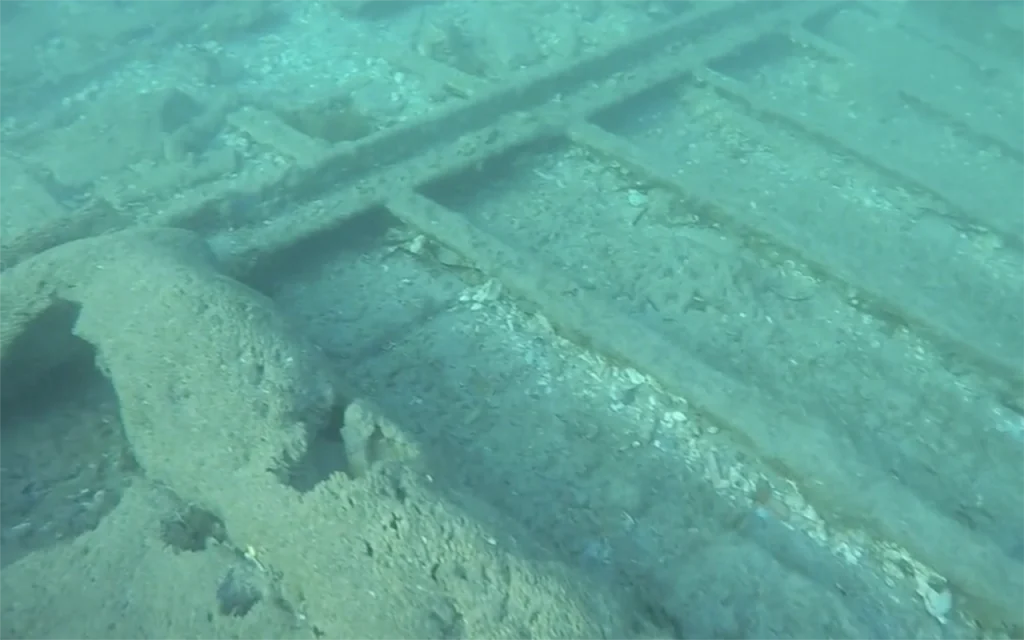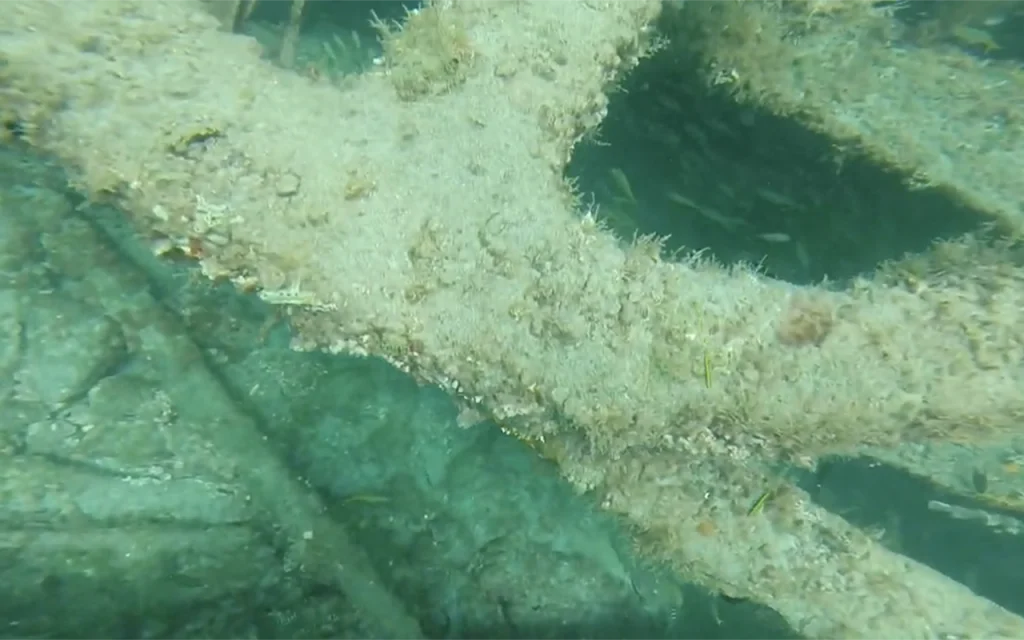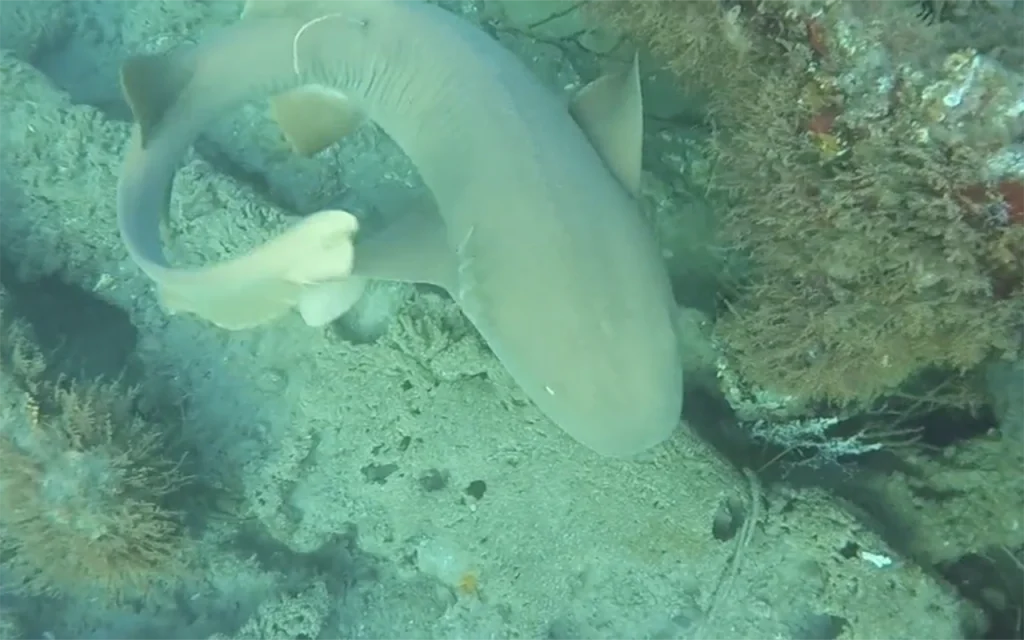Table of Contents

Overall, the Lofthus stands out due to its historical importance, accessibility, and the vibrant marine ecosystem it supports, offering a unique combination of adventure and education for divers.
Article at a Glance
- Historical Significance: The Lofthus, originally named Cashmere, was built in 1868 and is one of the few remaining iron-hulled barques. It is listed on the U.S. National Register of Historic Places and is part of Florida’s Underwater Archaeological Preserve.
- Wreck Location: The shipwreck is located at coordinates 26°33′46″N 80°02′18″W, approximately 175 yards offshore from Manalapan, Florida, in waters ranging from 15 to 20 feet deep.
- Diving Experience: The Lofthus is accessible for divers of all skill levels, making it a popular site for both scuba diving and snorkeling. The wreck’s shallow depth and proximity to shore enhance its appeal.
- Marine Life: Divers can encounter a variety of marine species, including nurse sharks, Caribbean spiny lobsters, grunts, jacks, and more, making for an exciting underwater experience.
- Identifiable Features: Key historical features of the wreck include remnants of the iron hull, deck beams, mast sections, and a worm gear believed to be part of the steering mechanism.
- Safety Measures: Divers are advised to use a diver-down flag, avoid anchoring on the wreck, monitor weather conditions, and respect legal protections that prohibit the disturbance of artifacts.
- Local Dive Shops: For diving trips to the Lofthus, divers should contact local dive shops in the Boynton Beach area, which may offer guided excursions, equipment rentals, and additional information about the site.
Shipwreck Location Coordinates and Depth
Depth
The wreck rests at a depth of 15 to 20 feet of water, with parts of the wreckage rising as much as six feet off the sea floor, depending on sand movement.
Location Coordinates
The shipwreck of The Lofthus is located at the coordinates 26°33′46″N 80°02′18″W, approximately three-quarters of a mile north of the Boynton Inlet and 175 yards offshore from Manalapan, Florida.

What Do Scuba Divers Say About This Ship
- Diving Experience: Divers enjoy exploring the Lofthus shipwreck due to its historical significance and the marine life it attracts. The wreck is situated close to shore, making it accessible for snorkeling and diving. The site is popular for its shallow depth, ranging from 10 to 20 feet, which makes it suitable for divers with varying experience levels.
- Marine Life: The wreck is home to diverse marine life, including guitar fish, nurse sharks, and spiny lobsters. Divers often find the marine environment around the wreck vibrant and engaging.
- Historical Context: The Lofthus is recognized as a historic shipwreck and is part of Florida’s Underwater Archaeological Preserve. Divers are reminded to comply with state rules, which prohibit removing artifacts from the site. Some divers have previously recovered brass items before the site became a preserve, contributing them to museum displays.
- Visibility and Conditions: The visibility and exposure of the wreck can vary with sand movement and weather conditions. Calm seas and light winds make for the best diving conditions, while rough seas can make the site unsafe.
What Kind of Marine Life Can Be Found on The Ship
- Anemones and Damselfish: These can often be found inside the mast sections of the wreck.
- Small Nurse Sharks: Typically found underneath the hull sections.
- Scorpionfish: Known to hide on the rusty iron parts of the wreck.
- Caribbean Spiny Lobster, Grunts, Jacks, Porcupine Fish, Porkfish, Snapper, Stingrays, and Wrasse: These native marine species are commonly seen around the wreck.
Key Information
| Key Information | Details |
|---|---|
| Original Name | Cashmere |
| Built | 1868 in Sunderland, England |
| Type | Iron-hulled barque |
| Final Voyage | Departed Pensacola, Florida on January 21, 1898 |
| Wreck Date | February 4, 1898 |
| Location | Near Boynton Beach, Florida; 175 yards offshore from Manalapan |
| Depth | 15 to 20 feet |
| Marine Life | Includes nurse sharks, Caribbean spiny lobsters, grunts, jacks, etc. |
| Protection Status | Part of Florida’s Underwater Archaeological Preserve |
| Diving Suitability | Accessible for divers of all skill levels; popular for snorkeling too |
What Makes The Lofthus a Unique Diving Experience
- Historical Significance: The Lofthus is one of the few remaining examples of iron-hulled sailing vessels from the late 19th century. Originally built in 1868 and named Cashmere, it was later renamed Lofthus and wrecked in 1898. The site is part of Florida’s Underwater Archaeological Preserve and is listed on the U.S. National Register of Historic Places.
- Accessibility: The wreck is located close to shore, about three-quarters of a mile north of the Boynton Inlet and 175 yards offshore from Manalapan, Florida. It is accessible for both snorkeling and scuba diving due to its shallow depth of 15 to 20 feet.
- Marine Life: The site is home to a variety of marine life, including Caribbean spiny lobsters, grunts, jacks, porcupine fish, porkfish, snapper, stingrays, and wrasse. This diversity makes it an attractive site for divers interested in marine biology.
- Dynamic Environment: The wreck’s exposure varies with sand movement, which means that different parts of the wreck may be visible at different times. This dynamic environment can make each dive a unique experience.
- Cultural and Educational Value: As a designated underwater archaeological preserve, the Lofthus provides educational opportunities for divers to learn about maritime history and archaeology. Laminated underwater guides are available from local dive shops to enhance the educational experience.
How Does The Lofthus Compare to Other Shipwrecks in Florida
- Historical Significance: The Lofthus is listed on the U.S. National Register of Historic Places and is part of Florida’s Underwater Archaeological Preserve. It is one of the few remaining examples of an iron-hulled barque from the late 19th century, originally built in 1868 and known as Cashmere before being renamed Lofthus.
- Accessibility and Visibility: Located close to shore near Boynton Beach, the Lofthus is easily accessible for divers and snorkelers. The wreck lies in shallow waters, about 15 to 20 feet deep, making it suitable for divers of all skill levels. The site can be affected by sand movement, which may cover or expose different parts of the wreck, adding to its dynamic nature.
- Marine Life: The Lofthus is home to a diverse array of marine life, including Caribbean spiny lobsters, grunts, jacks, porcupine fish, porkfish, snapper, stingrays, and wrasse. This rich biodiversity enhances the diving experience.
- Cultural and Educational Value: As an underwater archaeological preserve, the Lofthus provides educational opportunities for divers to learn about maritime history and archaeology. This aspect is less common in many other shipwrecks, making the Lofthus a valuable site for historical exploration.
What is The Full History of This Ship
The Lofthus, originally named Cashmere, has a rich and varied history. Built in Sunderland, England, by T.R. Oswald, the iron-hulled barque was launched on October 5, 1868. It was owned by the Liverpool Shipping Company and managed by H. Fernie & Sons. The ship measured 222 feet in length, 36.7 feet in beam, and had a depth of hold of 22.7 feet, with a gross tonnage of 1,277 tons. To deter pirates in the South Asian seas, false gunports were painted along its sides.
In 1897, the Cashmere was sold to a Norwegian named Henschien and was renamed Lofthus. The ship was then used in the American trade, primarily transporting cargo throughout the Caribbean and South America.
The final voyage of the Lofthus began on January 21, 1898, when it departed Pensacola, Florida, bound for Buenos Aires with a cargo of Southern pine. On February 4, 1898, the ship encountered a severe storm off the east coast of Florida. Due to the lack of navigational lights along the largely uninhabited coastline, the captain was unable to maintain bearings, and the ship ran aground on a coquina rock reef near modern-day Manalapan, Florida.
Efforts to save the ship were unsuccessful. The local tug Three Friends attempted to assist, but the Lofthus was too high on the beach and was being destroyed by waves. The 16-man crew was saved, but the ship was declared a total loss. The wreck was subsequently stripped of all usable items, and the cargo of 800,000 feet of lumber was auctioned off.In September 1898, the hull was dynamited to salvage the lumber, resulting in a scattered wreck site approximately 290 feet long by 50 feet wide. The wreckage includes deck beams, hull elements, and a worm gear believed to be associated with the vessel’s steering mechanism or a deck-mounted donkey engine.
Today, the Lofthus is part of Florida’s Underwater Archaeological Preserve and is listed on the U.S. National Register of Historic Places. It serves as a popular diving site, offering both historical insight and diverse marine life.

What Historical Features Can Still Be Identified on The Lofthus Wreck
- Iron Hull and Structure: The Lofthus was an iron-hulled barque, and parts of its iron structure, such as deck beams and hull elements, are still visible. The wreckage is scattered over an area approximately 290 feet long by 50 feet wide, with distinct sections for the bow, midships, and stern.
- Deck Beams and Planking: These structural components are part of the visible wreckage, providing insight into the ship’s construction and design.
- Mast Sections: Pieces of the iron mast can be seen protruding from the sand, offering a glimpse into the ship’s original rigging as a three-masted barque.
- Worm Gear: A worm gear, believed to be associated with the vessel’s steering mechanism or a deck-mounted donkey engine, is part of the midships area of the wreck.
- Scattered Wreckage: The site was dynamited after the wreck to salvage the lumber cargo, resulting in a scattered wreckage pattern that includes inverted decking and machinery parts lying at odd angles.
What Safety Measures Are in Place for Divers Visiting The Lofthus
- Diver-Down Flag: It is crucial for divers to display a diver-down flag while exploring the site. This flag signals to boaters that there are divers in the water, helping to prevent accidents.
- Anchoring Guidelines: Divers are advised not to anchor directly on the wreck to avoid damaging the site or losing their anchor. Instead, they should anchor in the sand nearby.
- Weather Conditions: The safety of diving at the Lofthus is heavily dependent on weather conditions. Calm seas and little wind are ideal for diving, while rough seas can make the site unsafe. Divers should monitor weather conditions closely before planning a dive.
- Sand Movement Awareness: The wreck is subject to significant sand movement, which can cover or expose different parts of the wreck. This dynamic environment requires divers to be cautious and aware of their surroundings, as conditions can change rapidly.
- Legal Protections: The Lofthus is protected by Florida laws that prohibit unauthorized disturbance, excavation, or removal of artifacts. Divers are encouraged to take only photographs and leave only bubbles, respecting the historical and archaeological significance of the site.
Dive Shops That Prove Diving Trips to This Shipwreck
The wreck is located near Boynton Beach, Florida, and is accessible from the shore or by boat.
It is recommended to contact local dive shops in the Boynton Beach area for information on guided diving trips to the Lofthus. These shops may offer diving excursions or provide rental equipment and advice for exploring the site independently.
North Florida Wrecks
- USS Oriskany
- USS Massachusetts
- SS Tarpon
- SS Gulf America
- Empire Mica
- USS Chippewa
- Avocet
- Black Bart
- The Vamar
- San Pablo
- USS Narcissus
- The Loftus Wreck
- The Dorothy Louise
- The Mizpah
- MV Janet
- The Eidsvag
- YDT-14 and YDT-15
- USS Strength
- Miss Louise
- The Lulu
- PC-1174
- Three Coal Barges
- USS Accokeek (ATA-181)
- El Dorado
- The Grey Ghost
- The Pete Tide II
- Red Sea Tug





